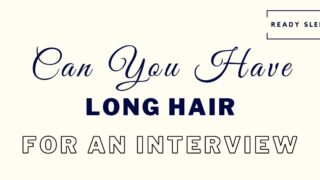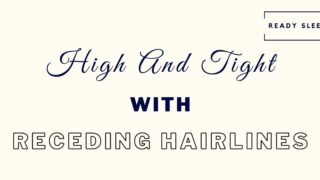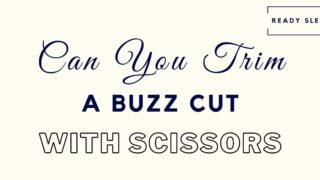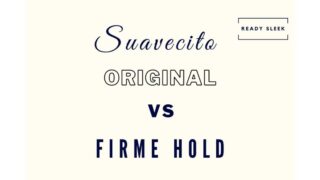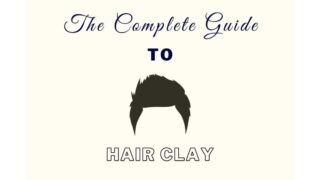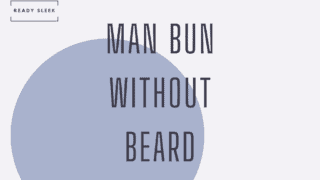The number of different types of fades out there can get overwhelming. It’s important to understand the differences to avoid getting a type of fade you really never wanted in the first place. So, fade vs skin fade – what’s the difference?
The term “fade” can be used to refer to any style where the sides and back gradually increase in length from the bottom to the top. A “skin fade” is a specific type of fade where the shortest length is shaved down to the skin using a razor.
Although that’s the gist, let’s dig a little deeper.
After briefly going through what “fades” really are, we’ll explore the differences between normal fades and skin fades in more detail and also go through how to choose between them.
Let’s get to it.
Fades: An Introduction
A “fade” is an effect where the hair at the sides and back appears to gradually increase in length from the bottom to the top. The different lengths are blended into each other seamlessly, creating the characteristic blurred effect of a fade.
Fades can be broadly defined and labeled in terms of how high up the sides and back they reach, as well as how short the shortest length of the fade is.
When discussing fade height, it’s important to use the right terms with your barber.
Fades can be low, mid, or high.
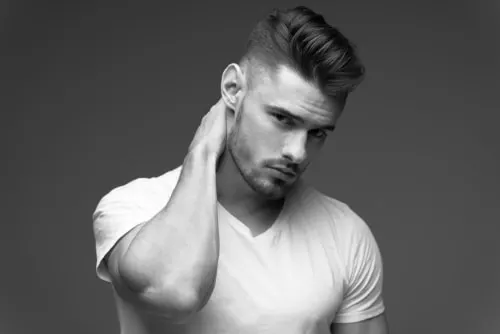
Image From Shutterstock
Low fades start transitioning from the shortest length of the fade into longer lengths around half an inch above the ear.
Mid fades do so around an inch above the ear, while high fades do so around the level of the temples.

Image From Shutterstock
As you can imagine, high fades are a lot bolder and more in-your-face than low fades as they’re so high up.
It leads to more of the sides and back being clipped down to their shortest length and this is more attention-grabbing than fades that don’t reach as high.
The other way of defining fades is according to how short the shortest length is. This is the length you’ll get at the bottom of the sides and back before it starts to transition into longer lengths further up.
The shorter the fade, the more obvious it’ll look.
Zero fades have the shortest length clipped down to a “number 0” – with no guard attached to the clipper. It’s also known as a shadow fade.
1 fades have the shortest length clipped down to #1 length (3mm), while 2 fades have the shortest length clipped to a #2 length (6mm).
But what about skin fades?
Well, skin fades are simply fades where the shortest length is shaved all the way down using a razor. It’s as short as fades can get.
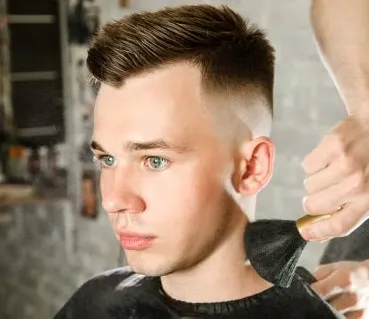
Image From Shutterstock
Fade Vs Skin Fade: The Key Difference
The key difference between a fade and a skin fade comes down to the length. When using the term “fade”, it could refer to any length. In contrast, “skin fade” specifically refers to a feature where the shortest length of the fade is shaved all the way down to the skin.
Based on this logic, skin fades are simply a type of “fade”, just like zero fades, 1 fades, and 2 fades are.
It’s just the shortest type of fade you can really get.
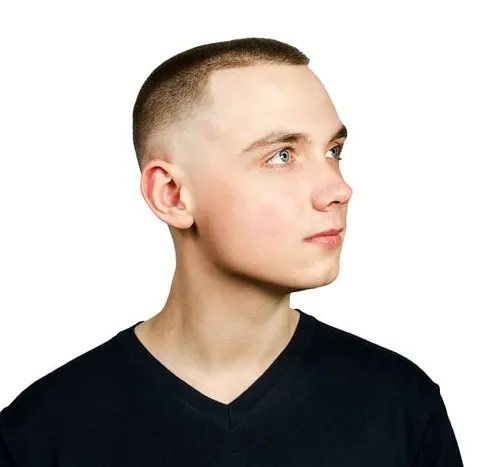
Image From Deposit Photos
A “fade” could refer to any length, while a skin fade has to be shaved.
This is important because simply telling your barber you want a “fade” won’t be good enough. It really doesn’t give them enough information.
You aren’t telling them how short you want the fade and how high up you want the fade.
You’ll need to tell them whether you want a low, mid, or high fade.
In addition, you’ll need to tell them how short you want the shortest length to be, and what length you want it to transition into further up the sides and back.
For example, choose between a zero fade, 0.5 fade, 1 fade, 1.5 fade, 2 fade.
But if you’d prefer that the shortest length was shaved all the way down to the skin, ask for a skin fade.
Fade Vs Skin Fade: How To Choose
When choosing between a regular fade (i.e clipper-cut and not shaved all the way down to the skin) and a skin fade, consider the following factors:
1. Subtlety
Skin fades are bold and attention-grabbing, simply because they’re so short. Having the sides clipped so short leads to more of a contrast with the hair on top of the head.
This is eye-catching, especially when combined with a long, scissor-cut style on top like a comb over or a pompadour.
Regular fades which are simply clipped and not shaved (eg. zero fades, 1 fades, and 2 fades) are still short and eye-catching but aren’t quite as obvious as skin fades.
The shorter the fade, the more pronounced the effect. This is because it leads to more of a contrast in length with the hair further up.
So, if you want a more subtle fade, go for a 1 fade or a 2 fade.

Image From Shutterstock
But if you want that fade to be obvious and a core feature of the hairstyle overall, a skin fade may be a great option.
Remember, the higher the fade, the less subtle it’ll be as well. So, a high skin fade will be more obvious and attention-grabbing than a low skin fade.
2. Shave Tolerance
Some people hate shaving – that’s no secret. They simply can’t tolerate the aftermath – the irritation and the itching that some people do get after shaving.
It’s why they go for stubble instead of clean-shaven on their face.
For the same reason, they probably wouldn’t care for a skin fade either. Skin fades require shaving to get that clean finish.
It can either be done using an electric shaver or a manual razor. Razor fades are achieved using a straight razor and are probably the neatest skin fade you can get.
But as you’d expect, people that hate shaving probably wouldn’t tolerate having to do it.
Another reason for this is that it needs to be done pretty frequently. There’s more on this coming up next, but ultimately, skin fades will need some upkeep to keep it looking consistently clean.
In other words, a skin fade will need to be shaved pretty frequently in order to keep it looking consistent. It isn’t a “set it and forget it” type of style.
This much shaving may not be acceptable to some people.
They would be better off going for a slightly longer fade style such as a zero fade or a 1 fade. These are still very short but leave behind a small amount of stubble.
Zero fades (a.k.a shadow fades) are so short that they look similar to a skin fade, but don’t require shaving with a razor. Instead, the hair is clipped using the lone blade of a clipper.
Although you’re still cutting very close, you aren’t going quite as close as a razor would. As a result, people that hate shaving would probably tolerate it a little better.
3. Maintenance
Skin fades are a high-maintenance type of fade.
The reason for this is that the growth of even a few millimeters of stubble is pretty noticeable and will lead that “skin fade” to look like a regular fade.
Because of this, people that want to maintain a consistent skin fade will usually find themselves getting it touched up every 2 to 3 weeks.
This takes time, money, and effort.
But it’s what it takes to maintain a clean skin fade at all times.
On the other hand, a regular, clipper-cut fade that isn’t shaved all the way down is a little lower maintenance.
1 fades and 2 fades, for example, don’t need quite as much upkeep. You could get away with letting several weeks pass in between touch ups. The growth of a few millimeters here and there isn’t as obvious.
So, while skin fades do have their appeal and benefits, bear the additional maintenance requirements in mind before you choose it as your fade style of choice.
If you’d prefer a slightly lower maintenance option, go for a regular fade instead of a skin fade.
While zero fades are still pretty high maintenance, they aren’t quite as high maintenance as skin fades because you don’t need as clean of a finish to get the look you’re aiming for.
4. Face Shape
Face shape is worth considering when choosing between a regular fade and a skin fade.
Essentially, people with rounder face shapes would benefit from having shorter hair at the sides. It removes fullness from the sides and has a slimming effect on the face, especially when viewing it from front-on.
Skin fades are as short as you can get. High skin fades remove pretty much all hair from the sides.
As you’d expect, this has a pretty prominent slimming effect on the face. It can also nicely define the jawline.
Ultimately, if you’ve got a rounder face shape, consider a skin fade over a regular, longer, clipper-cut fade.
However, zero fades work great too, as they’re also very short and the difference in length between a skin fade and a zero fade is pretty negligible.
It just won’t look as neat as a skin fade and will leave that “shadow” behind.
Conclusion
There you have it. Hopefully, the difference between regular “fades” and “skin fades” explained in as much detail as you ever could have wanted.
Use this information as a guide to help you determine which one is for you.
Enjoy.
Ready Sleek founder. Obsessed with casual style and the minimalist approach to building a highly functional wardrobe. Also a fan of classic, vintage hairstyles.

![Fade Vs Skin Fade: Differences And How To Choose [Pics]](https://www.readysleek.com/wp-content/uploads/2021/10/fade-vs-skin-fade-720x405.jpeg)
